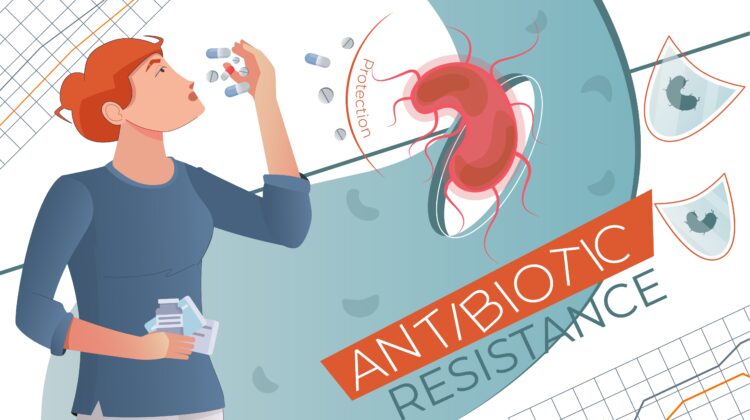
When the Drugs No Longer Work…
5 reasons to be hopeful from Bioinfect 2024 in the face of the increasing threat from AMR (Anti-microbial Resistance)
Many of the existential threats we face today will likely be solved by technology, but for that to happen there needs to be both innovation as well as the necessary funding to ensure promise becomes product. Over the past few years, money has flowed into fields such as netzero, agritech, AI, healthy aging and vaccines development, giving hope that climate change, global pandemics, and resource constraint will become forgotten problems to our childrens’ children. Antimicrobial resistance (AMR)- the increasing emergence of microbial strains that are resistant to antibiotics- however has historically been a chronically under-funded field. The current model for drug development requires high levels of private sector investment to get products over the line and approved for use. Investors need incentive and whilst highly priced patent-protected drugs provide this, new antibiotics often do not. Problem being, a new anti-microbial will usually be kept in reserve for use when other products have failed meaning low sales volumes. As a result of this, big pharma has largely moved away from developing new antibiotics and there has been a shortage of investment in start-up biotechs too: Companies making oncology drugs raised around $7 billion in 2020, while companies making antibiotics raised just $160 million (1).
All of this means that whist there have been 164 FDA-approved direct-acting antibacterial new chemical entities (NCEs) since the early 1900s, only one new molecular target NCE has been approved during the last 35 years (2). Unless there are fundamental changes to the innovation model for antimicrobials, and soon, we are simply not going to be able to tackle the threat that AMR poses to society: According to a recent study in the Lancet, in 2019 an estimated 5 million deaths were associated with AMR (3), predicted to rise to 10 million by 2050 (4).
And yet, perhaps helped by memory of the chaos that infectious diseases can cause to society, in the post-pandemic world there are a number of good reasons to be hopeful. Some of the UK’s leading authorities in the field of AMR gathered earlier this month in the heart of Liverpool’s Knowledge Quarter to discuss not only the threat we face, but some of the novel solutions to the problem currently in play. Here are 5 reasons to be cheerful from Bionow’s Bioinfect 2024 conference:
- New Payment Models for Novel Antibiotics
As noted above, the way new antibiotics are used in clinical practice reduces the financial incentive for investment. In the UK, this issue is being tackled head on-via a highly innovative subscription model for payment- the first of its type anywhere in the world (5). For companies bringing an innovative new antibiotic to market, subject to various evaluation criteria, the NHS will guarantee to pay a set annual fee for the drug, regardless of sales. Funding for new drug development is justified based on global sales potential, so for this model to truly work as an investment-driver in the field, it would need to be replicated across Europe and preferably in North America as well. But this is an important step forward by NHS England and the National Institute of Clinical Excellence (NICE), who presented the model at Bioinfect.
Other ‘pull incentives’ discussed at the meeting included transferrable exclusivity vouchers, whereby a government would grant a voucher to the developer of a new, approved product for a pre-defined, neglected disease. The voucher would extend marketing exclusivity for a different product. The developer could use the voucher to extend one of its own products or could sell the voucher to another drug developer for their use. Also, the currently stalled Pasteur Act in the US, which would see the introduction of a subscription model for the funding of new antibiotics, along the same lines as in the UK. Optimism for this being passed into law any time soon was not high, however, amongst delegates in Liverpool.
- Philanthropic and Private Investors
Venture funds and their like are unashamedly in the business of making money and so there is always going to be a need to get the business model right- and subscription payment approaches are a significant step in the right direction. However, perhaps supported by high-net-worth individuals with altruistic intents possibly based on personal family history, funds do exist specifically targeted at the field.
In addition, the increasing importance of Family Offices in the funding landscape offers another potential opportunity for AMR companies to source funding from investors seeking to do more than just make a return.
Douglas Thomson was on stage at Bioinfect talking about the KAMRA fund, which is specifically focused on infectious disease.
- The Pipeline
The WHO publish a regular review of antibacterial agents in clinical and preclinical development and have clearly stated that “overall, the clinical pipeline and recently approved antibiotics are insufficient to tackle the challenge of increasing emergence and spread of antimicrobial resistance” (6). That said, the pipeline is far from empty: as of May 2022, a total of 77 products (45 antibiotics and 32 non-traditional antibacterial agents) were in clinical development, three of which are in the pre-registration phase, with 217 in pre-clinical development (6). 2024 Bioinfect showcased a sample of companies working in the area including Infex Therapeutics.
Infex, based in the North West at Alderley Park, specialise in critical-priority infectious diseases, and delegates heard about their lead clinical-stage candidate, RESP-X. RESP-X is a new therapy to treat Pseudomonas aeruginosa infections in non-cystic fibrosis bronchiectasis (NCFB) patients, a chronic and debilitating respiratory disease for which there are currently no approved treatments.
The UK is home to other exciting biotechs working in the field, not least Metallobio.
Metallobio have developed an entirely novel antimicrobial platform based on Ruthenium with two candidate compounds RuTMP and RuRuTMP each at the final stages of preclinical evaluation. The compounds that underpin MetalloBio’s platform exploit a new chemical space radically different to anything in the clinic or the pipeline. Additionally, these compounds have a novel mechanism of action, little-to-no-emergence of resistance, low toxicity and represent a brand new antimicrobial class.
- Big Pharma waking up to the threat ?
Another push factor providing funding for new antibiotic development is public-private partnership, the AMR Action Fund (7). With around $1billion available and involvement from many Big Pharma players such as Novartis, GSK and Lilly, equity investments are made in “small and mid-size biotech companies that are developing antimicrobial therapeutics for WHO and CDC priority pathogens”. These companies could do more, but it’s a start.
- Grants (PACE)
Finally, grant funding is playing its role in providing push incentives for new AMR drug development. For example PACE (Pathways to Antimicrobial Clinical Efficacy), a partnership between Innovate UK, LifeArc & the Medicines Discovery Catapult is a £30 million programme of funding and support to be deployed over five years (8). Up to 12 applicants will be awarded a maximum of £1 million in grant funding, with projects expected to last up to two years. Innovate UK Knowledge Transfer Network comment:
“PACE is not just about grant funding; we offer a truly collaborative approach to project development and delivery. Those who secure funding will feel the wider value of a network of potential project partners and receive advice and guidance from some of the best in the field. And we’re there for the long run, so whether you move to the next stage of development or aren’t successful in securing a grant this time around, you can stay plugged into our community and continue to benefit from our expert ecosystem.”
These are reasons to be hopeful, but one overriding sentiment of Bioinfect 2024 was that more needs to be done to keep the very real threat posed by AMR firmly on the news agenda. It really is hard for the free market alone to solve these sort of massive intergenerational threats to humanity, and sustained and concerted transnational government intervention in the form of funding and push and pull incentives for the private sector will be needed. Ensuring AMR stays in the collective consciousness (along with global warming and everything else), it was agreed, will be crucial in pressurising governments around the world to act. One speaker in Liverpool commented that what AMR really needs is ‘its own Greta Thunberg’.
References
- https://onehealthtrust.org/news-media/podcasts/treating-antibiotics-as-infrastructure/
- The State of Innovation in Antibacterial Therapeutics David Thomas, CFA and Chad Wessel BIO INDUSTRY ANALYSIS February 2022
- Global burden of bacterial antimicrobial resistance in 2019: a systematic analysis – The Lancet
- Antimicrobial Resistance: Tackling a crisis for the health and wealth of nations The Review on Antimicrobial Resistance Chaired by Jim O’Neill December 2014
- https://www.nice.org.uk/about/what-we-do/life-sciences/nice-advice-service/models-for-the-evaluation-and-purchase-of-antimicrobials#:~:text=NICE%2DNHS%20England%20pilot%20project,instead%20of%20the%20volumes%20used.
- 2021 Antibacterial agents in clinical and preclinical development: an overview and analysis
- https://www.amractionfund.com/
- https://paceamr.org.uk/




